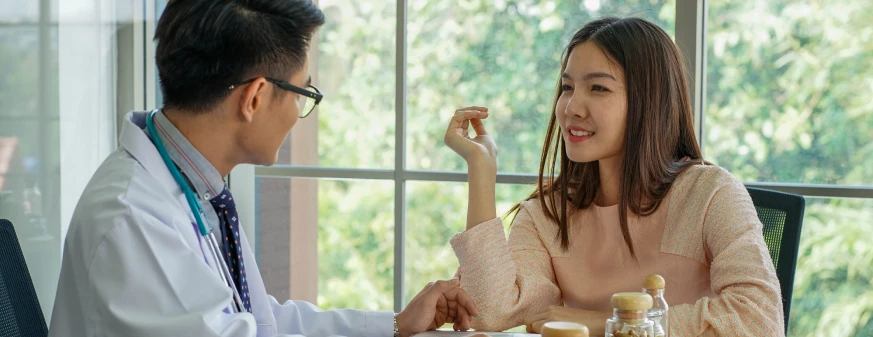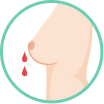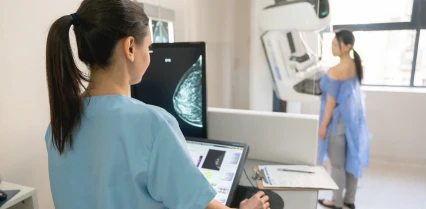
Be Ready: A Breast Cancer Insurance Plan
With its high incidence, breast cancer is a possibility every Filipina must prepare for. But it’s curable when detected early. Live your best life with screening, proactive daily habits and a cancer insurance plan.
Long before hit chick flicks or political candidates, the color pink was already a powerful pop culture symbol – for breast cancer. Globally and in the Philippines, breast cancer scores high for awareness and activism.
But even with this awareness, breast cancer is often found too late. So it’s smart to make preventive habits part of your everyday routine, and make your cancer protection plan a priority not a luxury. Here’s how.

Breast Cancer is the #1 Cancer in the Philippines
Breast cancer remains the most common cancer in the Philippines. It’s estimated that 1 out of 13 Filipino women will be diagnosed with it in their lifetime.
While it is widespread, breast cancer is also curable. It’s not uncommon to meet Filipina breast cancer survivors, a fact which highlights the literally life-changing need for awareness and early detection.
Every woman has the responsibility to know the facts, be proactive, and not delay medical visits as many Filipinos have done since the pandemic.
Understanding Breast Cancer
Where does breast cancer begin? It develops in the breast tissue, primarily in either the ducts or glands responsible for milk production. There are different types of breast cancer, including ductal carcinoma (originating in the milk-producing glands).
Symptoms and Warning Signs
Early detection depends on recognizing the signs and symptoms. Make a habit of regular breast examinations and screenings, so you can instantly recognize changes in your breasts. Some common indicators include:
 | Breast Lumps or Thickening |
 | Changes in Size or Shape |
 | Nipple Discharge |
 | Pain or Tenderness |
It's important to note that not all women with breast cancer experience these symptoms. Even without symptoms, keep up your regular breast self-examination and screenings.
Look Out for These Risk Factors
Several factors can increase the risk of developing breast cancer:
 | Age – But Patients are Getting Younger |
 | Family History |
 | Hormonal Factors |
 | Lifestyle Choices |
 | Genetic Mutations |
Prevent Breast Cancer With a Healthy Lifestyle
After a test placed her at high hereditary risk, actress Angelina Jolie had major surgery to prevent breast cancer. But you don’t have to go that far. In the Philippines, keeping a healthy lifestyle is the most proactive way to lower your breast cancer risk. Here are some preventive measures.
Healthy weight (BMI) |
Moderate exercise 30 mins/day |
Limit or quit alcohol |
Breastfeed, ideally for a year or more |
Careful with MHT | Menopausal Hormone Therapy has been linked to higher risk. Ask a healthcare professional for alternative options for menopausal sympt |
Breast Cancer Screening and Early Detection
Early detection plays a crucial role in treating breast cancer. In the Philippines, we use two main methods:
Breast Self-Examination Get to know your own breasts well enough to detect any changes, and form the habit of doing this monthly. Educate yourself on the proper technique or consult healthcare professionals. |
Mammograms A must for women 40 and up. This x-ray detects lumps early, before they grow large enough for you to feel during your breast self-exam. Make sure your corporate or selffunded plan covers mammograms, or seek out the subsidized tests offered by women’s health groups, the National Cancer Society of the Philippines and the Department of Health. |
Managing the Financial Impact of Breast Cancer
Breast cancer treatment can be financially difficult. Consider the following factors, and be prepared:
Treatment Costs:
Breast cancer treatment in the Philippines varies in cost, depending on the stage of cancer and the treatment required. Government facilities may offer more affordable options, but private hospitals often have shorter waiting periods.
Health Insurance or BIG 3 Coverage:
It is crucial that you have adequate health insurance, or BIG3 coverage, that includes cancer treatment. This will help you manage the financial impact of a cancer diagnosis. These plans can help cover medical expenses, loss of income, and other associated costs.
Unexpected, but Not UnpreparedWith the high incidence of breast cancer in the Philippines, it's important to prioritize regular screenings, keep a healthy lifestyle, and secure your own financial protection. At FWD Life Insurance Philippines, you can choose between Vibrant, a complete health protection plan that covers you from wellness to recovery.; or FWD BIG 3, a critical illness insurance plan that provides financial support upon diagnosis of cancer, stroke and heart attack. Either way, being financially prepared will keep you stronger against breast cancer and other serious health challenges. See how FWD plans can offer you peace of mind, and get a personalized quote to protect yourself, right here. |













